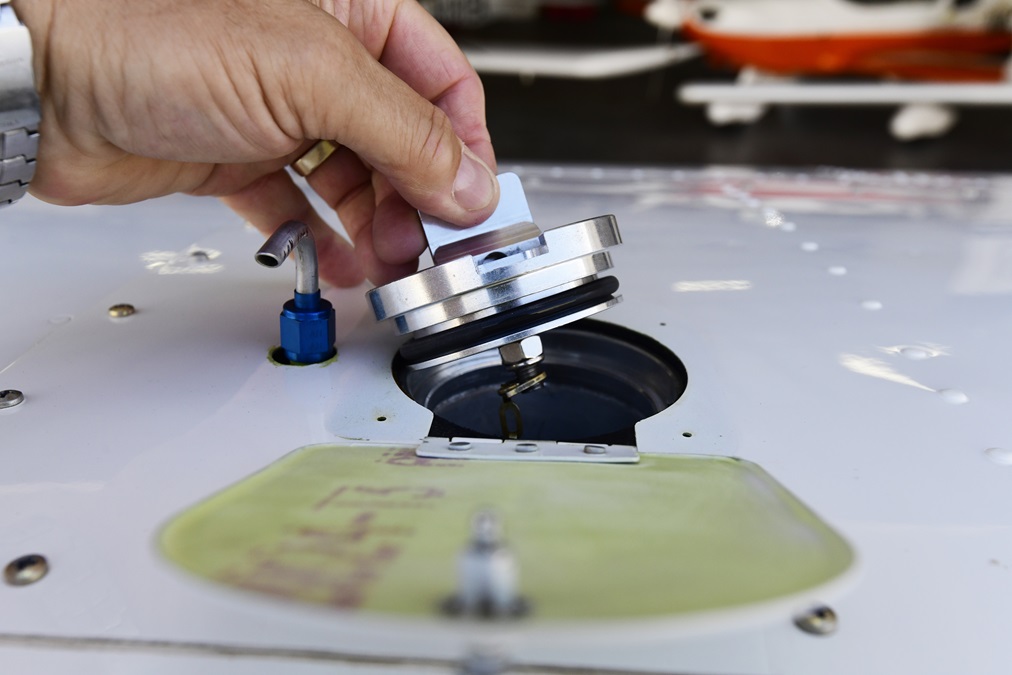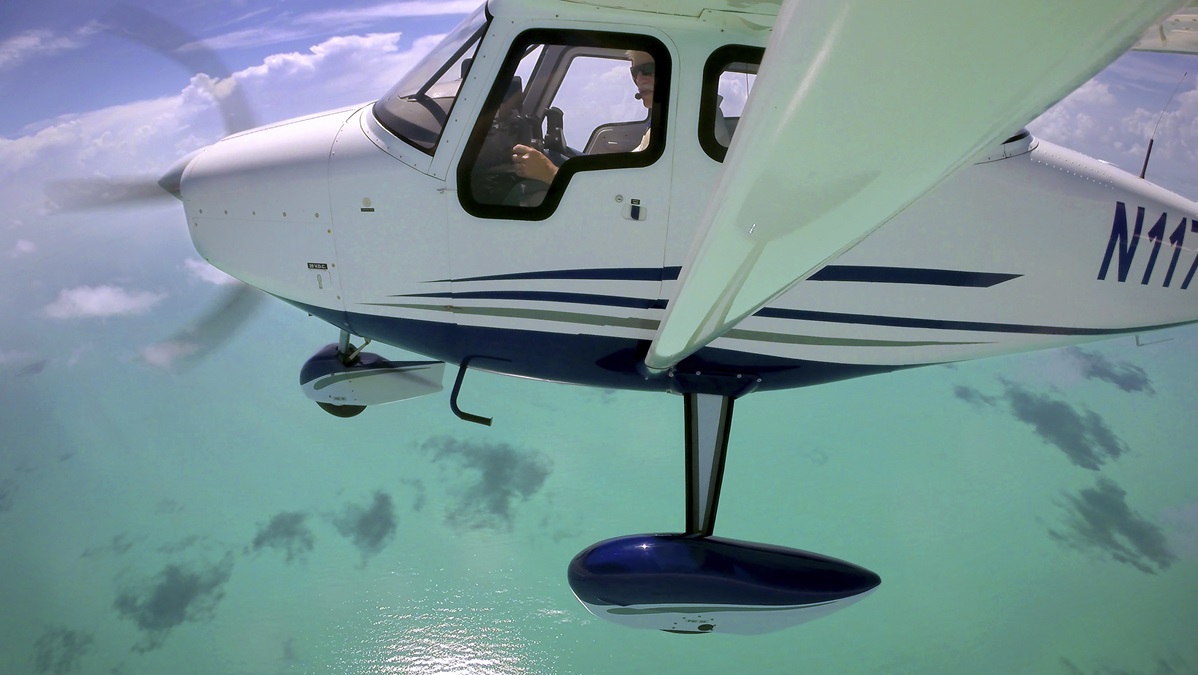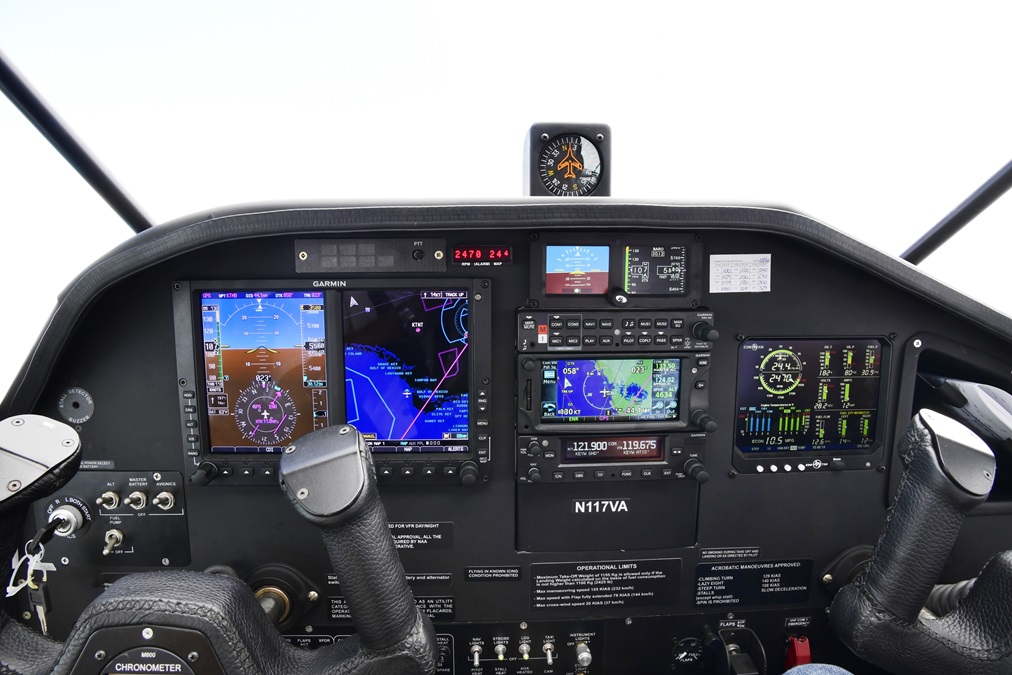Vulcanair V1.0: Contender
An Italian four-seater takes onthe U.S. training market
Six people wrenching, tugging, testing, and refastening an ill-fitting hose cleared the last hurdle to flying the four-seat single in the United States. The three-door Cessna lookalike is aimed at the flight training and owner-operated markets and the Vulcanair V1.0 has a retail price of $278,000—about $100,000 less than competing models.
Benaiges and Mike McMann, vice president of sales and marketing, hope that price will give their company an advantage in the growing trainer market as demand for new pilots soars. The price was attractive to Aero Management Group Business Development Director Ryan Maxfield, who runs Part 141 flight schools in six locations and committed to purchase 11 aircraft in 2018, plus 25 more in 2019.
“Our two biggest concerns are number one, how to find quality instructors, and number two, how to find available aircraft to do flight training,” said Maxfield, who took delivery of N117VA, the first V1.0 in the United States.
Saving $100,000 to $125,000 per aircraft compared to other new four-seat trainers is huge for flight school operators, Maxfield said. “It literally makes the difference whether we can be in the flight training business or not. If we were required to purchase a $400,000 aircraft, we could not be in business. It’s really that simple.”
Maxfield said availability of new aircraft also is an issue because of backlogs at companies such as Textron and Piper. “We’ve heard from large universities that they could put in an order today and then get one aircraft every 10 months or so. That just won’t work.”
And Maxfield wanted to buy new aircraft. “The used market for traditional training aircraft like a Cessna Skyhawk or a Piper Archer is very tight, and it’s very difficult to find them in good shape,” he said. Plus, young pilots are more comfortable with the digital environment. He believes the V1.0’s full digital panel will meet students’ expectations. He also complimented the Vulcanair’s predictable flying qualities, adding that “this airplane flies as though it’s been out there flight training for the last 50 years. But it just happens to be brand-new.”
In fact, the welded steel tube cockpit structure and aluminum-skinned high wing airplane was originally designed in the 1960s as the Partenavia P.64/P.66 by engineer Luigi Pascale, who later founded Tecnam. The 1960s airplane was outfitted with a 180-horsepower Lycoming O-360 engine and dubbed the “Oscar.” Hundreds are flying in Europe, and the aircraft has won praise for its stoutness and ability to soak up the bumps at unimproved airstrips—a favorite of pilots seeking to avoid landing fees at paved airfields.
Vulcanair purchased the assets of Partenavia in 1996 and became the type certificate holder for numerous dormant designs. Vulcanair announced the EASA-certified V1.0 in 2014, and the trainer earned FAA certification in December 2017. The Italian aircraft manufacturer has produced more than 500 EASA- and FAA-certified, single- and twin-engine, piston- and turbine-powered aircraft and credits itself as “one of the structural pillars” of Italian general aviation.
Time to fly
The steel tube construction provided easy cockpit grab handles as we settled into leather-covered seats with gray diamond pattern stitching and blue accents. Interior panels painted bright white match the outer fuselage color.
The leather front seats are comfortably adjusted fore and aft. Panel-mounted switches are readable and within easy reach, an LED illuminates the beefy center-floor-mounted, red aluminum fuel selector, and a countdown timer mounted on the control yoke assists with fuel management.
Additional nice touches for front seaters include sun visors, floor-mounted headphone jacks, USB ports, and an auxiliary power port. Back seaters get their own pair of overhead headphone jacks and a left-side auxiliary power receptacle with more USB ports.
There was enough room in the front seats between Benaiges and me that we didn’t rub shoulders. On the next leg of the trip, McMann had an easy job of climbing into the rear seat through the aircraft’s third door, behind the co-pilot’s position.
Benaiges and McMann said the factory has approved some modifications for the U.S. market. Height-adjustable seats, opening windows for the composite doors, map pockets, a baggage door strut, seat rails that will extend another couple of notches for long-legged pilots, and other tweaks are on the list of improvements for the next aircraft to make its way across the Atlantic. The manufacturer vows to swap out the doors on existing models—free of charge—when the opening windows are introduced.
The Vulcanair V1.0 climbedhands-off over the deep blue Atlantic Ocean, and we made our right turntoward the Florida Keys.With three 210-pounders on a 90-degree day at Miami Executive Airport, we selected flaps at 14 degrees for takeoff; switched on the fuel pump; and pushed throttle, mixture, and propeller controls full forward on the center panel power quadrant. About one-quarter of the 5,000-foot-long Runway 9L slipped behind us before the newly uncrated European wanted to fly.
The V1.0 rotated smoothly at 65 knots with little coaxing. Solid and immediate feedback from pushrod-actuated control surfaces inspired confidence. The vertical speed tape of the Garmin G500 displayed VX and VY, making climbout a breeze. Very little right rudder input was needed to keep coordinated.
Benaiges looked like a proud parent as the idea for a reasonably priced, well-equipped trainer that he set in motion three years ago hit its stride. Retracting the flaps with a simultaneous and well-timed pull on the yoke was the secret to a smooth transition, he said, and we climbed out at 80 knots.
Large side windows, an expansive front windscreen, and massive overhead skylights made scanning the busy Miami airspace easy.
The Vulcanair V1.0 climbed hands-off over the deep, blue Atlantic Ocean and we made our right turn toward the Florida Keys. We cruised down the coastline at about 125 knots indicated on 11 gallons per hour at 4,500 feet and “25 squared” on the rpm and manifold pressure gauges.
A JPI engine analyzer showed fuel quantity and flow, cylinder head and exhaust gas temperatures, oil and manifold pressure, rpm, alternator output, and other parameters. Future models will replace the JPI and Garmin G500 with the avionics firm’s G500 TXi 10.6-inch PFD/MFD as standard equipment, along with Automatic Dependent Surveillance-Broadcast In and Out but no autopilot.
During air work, steep turns were predictable. A quick nose-up flick of the manual trim wheel helped keep us at altitude. In fact, the trim wheel didn’t need to be moved far from the Takeoff position, no matter which part of the flight envelope we explored.
With power set to idle, the efficient but forgiving wing needed a moment to slow down to 78 knots before we could throw in the first notch of electric flaps, quickly followed by the second notch at 28 degrees. Full flaps are 40 degrees, but Benaiges said we probably wouldn’t need the full drag effect. He was right.
We slowed to 50 knots and pointed skyward at about 20 degrees and added rudder pressure as needed before the Vulcanair reluctantly approached a stall. The aircraft mushed forward and lowered its nose but didn’t noticeably drop a wing. We quickly recovered with forward yoke and power.
Power-on stalls came next with partial flaps at 14 degrees to simulate the departure configuration. We slowed to about 55 knots—considerably below the book-advised 65-knot rotation speed—and applied full power. With the nose pointed well above the horizon, directional control was gingerly maintained with a slight rudder dance. Recovery was quick and as predictable as before.
After the air work we dodged some late-morning buildups and called Key West International Airport control tower. Decreasing manifold pressure to 15 inches gave us the magical 78 knots for flap deployment, while propeller control and mixture were pushed full forward. We landed just shy of 60 knots, much like a Cessna 172.
Some procedures will take some adjustment for pilots accustomed to Skyhawks. For example, the fuel pump is turned on for takeoff, climbout, and landing. The pilot’s operating handbook calls for takeoff flaps. The constant-speed propeller needs to be managed, although a fixed-pitch option is in the works to lower costs for flight schools.
A couple of issues popped up during our flights on a typically hot and humid South Florida morning. When Benaiges became bathed in perspiration—an unintended victim of the huge skylight—we determined a right-side fresh air vent intake scoop was blocked. Although we were well above the stall speed, the warning horn curiously nagged us through a 45-degree left turn, yet it was silent during the same maneuver to the right. We temporarily pulled the circuit breaker and added the fault to a short punch list that was quickly tackled after we landed at Miami Executive, Ameravia’s headquarters.
Banking on the future of flight instruction
McMann’s research shows there aren’t enough aircraft to train enough new pilots to meet the projections in jet-maker Boeing’s latest jobs forecast. That means there’s likely to be strong demand for a newcomer to the U.S. training market. The Italian factory plans to be producing three aircraft per month by the end of 2018 and expects most of them to go to flight schools, he said. Factory-new and time-tested, with a digital IFR Garmin panel and a third door for backseaters, the Italian trainer is a new player to watch in the U.S. training market. AOPA
Email david.tulis@aopa.org











